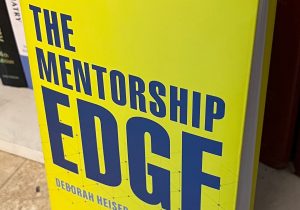“Zoom In” to Keep Group Review and Critique on Track
Work-in-Progress sessions (WIPs) are at risk of getting bogged down at the wrong level of feedback, most often focusing on specific edits or details that may not be the top priority, with the focus often driven by those who speak up first.
Several steps can help deploy the group’s time well and find the right level of discussion:
- Appoint a moderator to monitor the time and ensure all who have input are heard.
- Ask the individual whose materials are being reviewed to give a brief (2-3 minutes max) overview of who the audience is for the work and where they feel they most need input.
- Then use a zoom-in format for finding the right level for review and critique.
Most WIPs will not reach all levels of zooming in. This approach works because it ensures larger concerns are discussed first. Word and sentence edits are not crucial if the whole product is poorly organized or unclear.
To guide discussion at each level, use framing questions and topics like these:
30,000 feet
- Is content appropriate for the audience?

- Can the audience/reader summarize the gist accurately?
- Are materials engaging (i.e., clarity, title, rationale, implications of findings)?
- Are materials properly formatted?
- Is speaking volume, intonation, and pace optimal?
- Is use of space in poster or written material well-allocated?
10,000 feet
- Is the information well-organized?
- Does it unfold in a logical fashion?
- Was time/space allocation well-distributed?
- Are methods clear and results flow from methods?
- Does discussion overreach the results?
- Are challenges and considerations addressed?

Forest
- Are materials attractive and within conventional expectations for style and clarity?
- Is logic tight connecting rationale, objective, methods and results?
- Is word choice crisp and consistent?
Trees
Is word choice consistent?
For presentations:
- Quick slide-by-slide feedback
For written materials:
- Section-by-section or
- Paragraph-by-paragraph feedback
- Include tables and figures
For posters:
Section-by-section feedback
Leaves
- Font size, readability
- Table and figure legends
- Typos
Chlorophyll
- Choice of stronger words
- Use of symbols
- Micro-edits
- References
Additional Tips
- Prohibit use of laptops and ask the group to silence devices.
- Print materials for review in order to allow participants to provide edits and comments that may not fit in the discussion time.
- Encourage return for additional rounds after revisions.
Save time for participants who have had review and critique in prior sessions to report on progress and to celebrate successes like publications and successful presentations.
Related Posts:
How to start a near-peer work-in-progress group
Avoiding Barriers Between Your Work and Your Reviewer
One-Minute Writing Roundup






1 Comment
I’ve particpated in multidisciplinary WIP at Vanderbilt as part of the BIRCWH Scholars program for over a year how. As a result, I’ve improved my ability to distill my science into clear, compelling language that peers outside my field can understand. I expected to sharpen my aims pages and other grant components when it was my turn to be critiqued, and I did. What I did not anticipate was how much my writing would improve from watching my peers in the ‘hot seat’. Learning the ‘formula’ of persuasive grant writing by critiquing science I was unfamiliar with was a highly effective way for me learn the right structure and level of detail to include. I’m really grateful for all that I’ve learned and highly recommend this as a strategy to take your science to the next level.